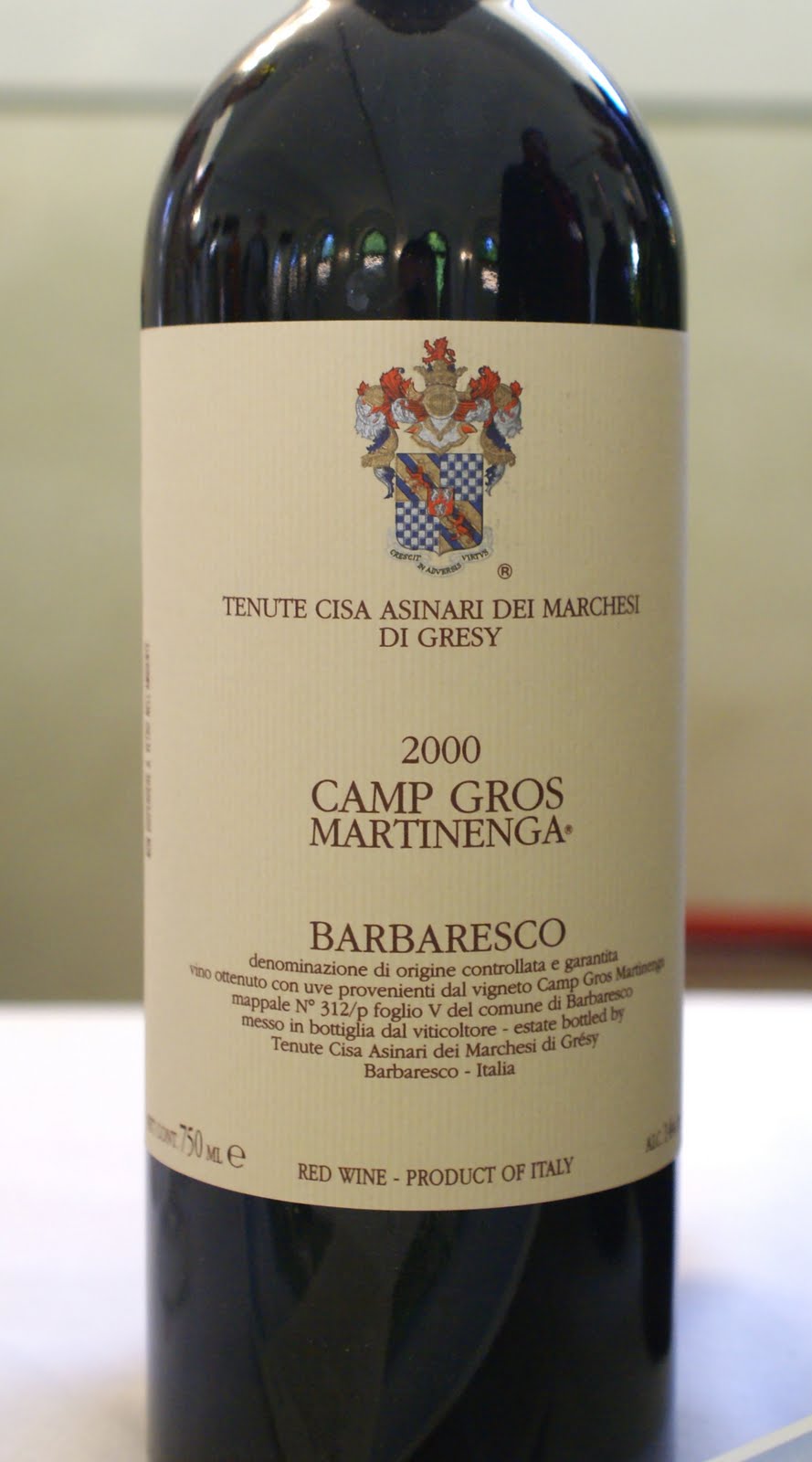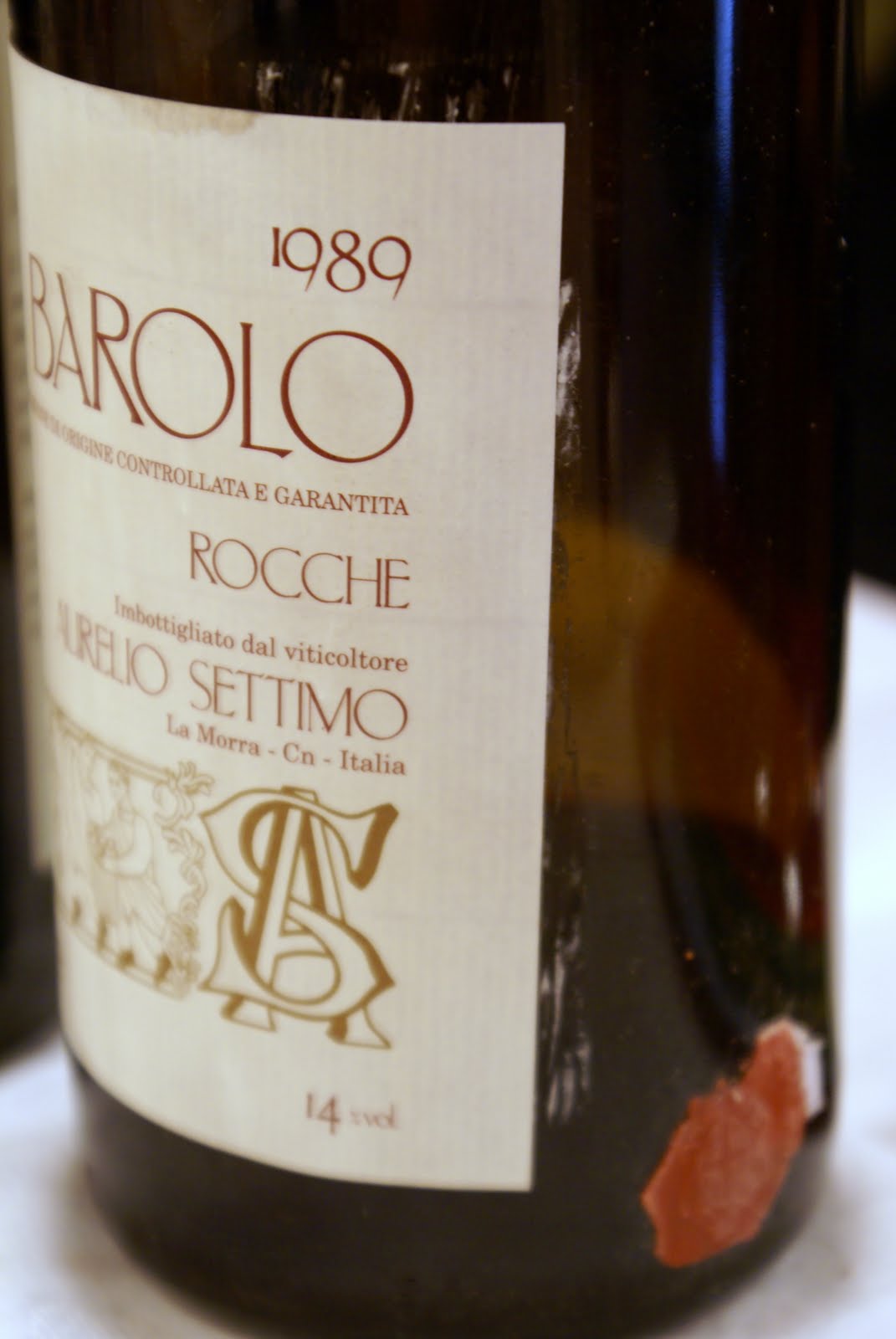Patience required
Posted on 24 May 2010
 Premature ageing seems to be the major problem of the 2000s. Those wines that are still alive are attractively fruity and rich with soft acids and certain elegance. I’ve tasted 46 2000s and while the sample was far from exhaustive – producers presented their wines at their own discretion, and many good ones abstained – but I think quite representative (I did not taste any crus from Serralunga or Monforte in the Barolo DOCG, however). In no particular order, those wines I really liked included Matteo Correggia’s Roero Ròche d’Ampsèj, Michele Taliano’s Barbaresco Ad Altiora, Silvio Grasso’s Barolo Ciabot Manzoni, Mario Gagliasso’s Barolo Rocche dell’Annunziata and a great duo of Barolo Riserva from Cavallotto: Bricco Boschis Vigna San Giuseppe and Vignolo. Those Barolos and Barbarescos that still have the power to age and improve are few and far between, however: two that really rose above their peers were the Barbaresco Martinenga Camp Gros by Marchesi di Grésy, a Nebbiolo of majestic minerality and acidic structure, and the old-vine Barolo Bussia Riserva by veteran Sergio Barale: fantastic fruit and panache in this blueberry-scented wine (tasted from magnum).
Premature ageing seems to be the major problem of the 2000s. Those wines that are still alive are attractively fruity and rich with soft acids and certain elegance. I’ve tasted 46 2000s and while the sample was far from exhaustive – producers presented their wines at their own discretion, and many good ones abstained – but I think quite representative (I did not taste any crus from Serralunga or Monforte in the Barolo DOCG, however). In no particular order, those wines I really liked included Matteo Correggia’s Roero Ròche d’Ampsèj, Michele Taliano’s Barbaresco Ad Altiora, Silvio Grasso’s Barolo Ciabot Manzoni, Mario Gagliasso’s Barolo Rocche dell’Annunziata and a great duo of Barolo Riserva from Cavallotto: Bricco Boschis Vigna San Giuseppe and Vignolo. Those Barolos and Barbarescos that still have the power to age and improve are few and far between, however: two that really rose above their peers were the Barbaresco Martinenga Camp Gros by Marchesi di Grésy, a Nebbiolo of majestic minerality and acidic structure, and the old-vine Barolo Bussia Riserva by veteran Sergio Barale: fantastic fruit and panache in this blueberry-scented wine (tasted from magnum).With the pale performance of the 2000s, it was to the private vertical tastings that my attention was diverted, where the bottles on show often spanned three or four decades. At Cascina Luisin, one of my favourite Barbaresco producers (the Rabajà 2000, tasted several times, was ironically one of my wines of 2009), we had a fantastically preserved 1970 that showed a fairly tertiary bouquet but had amazing punch and a full flavour on the palate. At Aurelio Settimo, one of the last Mohicans of the true traditional style of Barolo (see recent post here), we had a look at vintages ending in 9: the 1979 and 1989 were very aged, with caramelly, roasted-meaty, balsamic vinegar bouquets yet still some tannic and acidic punch. But the show was stolen by the 1999 Rocche Riserva, a wine of majestic grace and balsamic richness to the fruit; clearly the best wine made here in recent years.
 The most impressive vertical was organised by the house of Cordero di Montezemolo. We tasted the Barolo Monfalletto in no less than nine vintages; a wine that is often unshowy and a little austere in youth but goes on for decades. In contradiction to the former, the 2005 and 2006 were lovely, with succulent fruit and a near-perfect balanced that belies their fairly modernistic vinification. I was a little underwhelmed by the simple and advanced 1988, and the 1970, 1971 and 1977 showed a certain greenness and dilution that I find typical of Barolos from their decade (all three were very good though), but it was all worth enduring to have two sips of the unforgettable 1958, a gran signore of a wine with aristocratic composure and some vivid tannic verve still left to continue for the next decade or so.
The most impressive vertical was organised by the house of Cordero di Montezemolo. We tasted the Barolo Monfalletto in no less than nine vintages; a wine that is often unshowy and a little austere in youth but goes on for decades. In contradiction to the former, the 2005 and 2006 were lovely, with succulent fruit and a near-perfect balanced that belies their fairly modernistic vinification. I was a little underwhelmed by the simple and advanced 1988, and the 1970, 1971 and 1977 showed a certain greenness and dilution that I find typical of Barolos from their decade (all three were very good though), but it was all worth enduring to have two sips of the unforgettable 1958, a gran signore of a wine with aristocratic composure and some vivid tannic verve still left to continue for the next decade or so.



